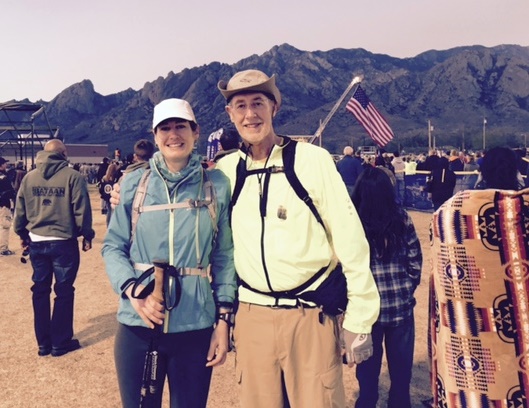On March 20 our own Fred Walk participated in the 27th annual Bataan Memorial Death March at the U.S. Army White Sands Missile Range in New Mexico.
This 26.2 mile walk is held to honor World War II soldiers who defended the islands of Luzon, Corregidor, and the harbor forts of the Philippines. According to the promotional information “marchers can expect warm, windy, and dry conditions” with a threat of driving windstorms, blowing dust, and sand. They are also warned about how to respond to coyotes.
Professor Walk experienced temperatures ranging from 39 degrees at the beginning of the day to 75 degrees in the heat of the day. He finished his walk in just over seven hours, on the move the entire time. He says of his experience, “It was very challenging yet invigorating. The landscape was stunning.” And yes, he would do it again.
A brief history of the Bataan Memorial Death March
created to honor a special group of World War II heroes.
These brave soldiers were responsible for the defense of the islands of Luzon, Corregidor and the harbor defense forts of the Philippines. The conditions they encountered and the aftermath of the battle were unique. They fought in a malaria-infested region, surviving on half or quarter rations with little or no medical help. They fought with outdated equipment and virtually no air power.
On April 9, 1942, tens of thousands of American and Filipino soldiers were surrendered to Japanese forces. The Americans were Army, Army Air Corps, Navy and Marines. Among those seized were members of the 200th Coast Artillery, New Mexico National Guard. They were marched for days in the scorching heat through the Philippine jungles. Thousands died.
The Army ROTC Department at New Mexico State University began sponsoring the memorial march in 1989 to mark a page in history that included so many native sons and affected many families in the state. In 1992, White Sands Missile Range and the New Mexico National Guard joined in the sponsorship and the event was moved to the Missile Range.
Since its inception, the memorial march has grown from about 100 to some 6,500 marchers from across the United States and several foreign countries. While still primarily a military event, many civilians choose to take the challenge.


